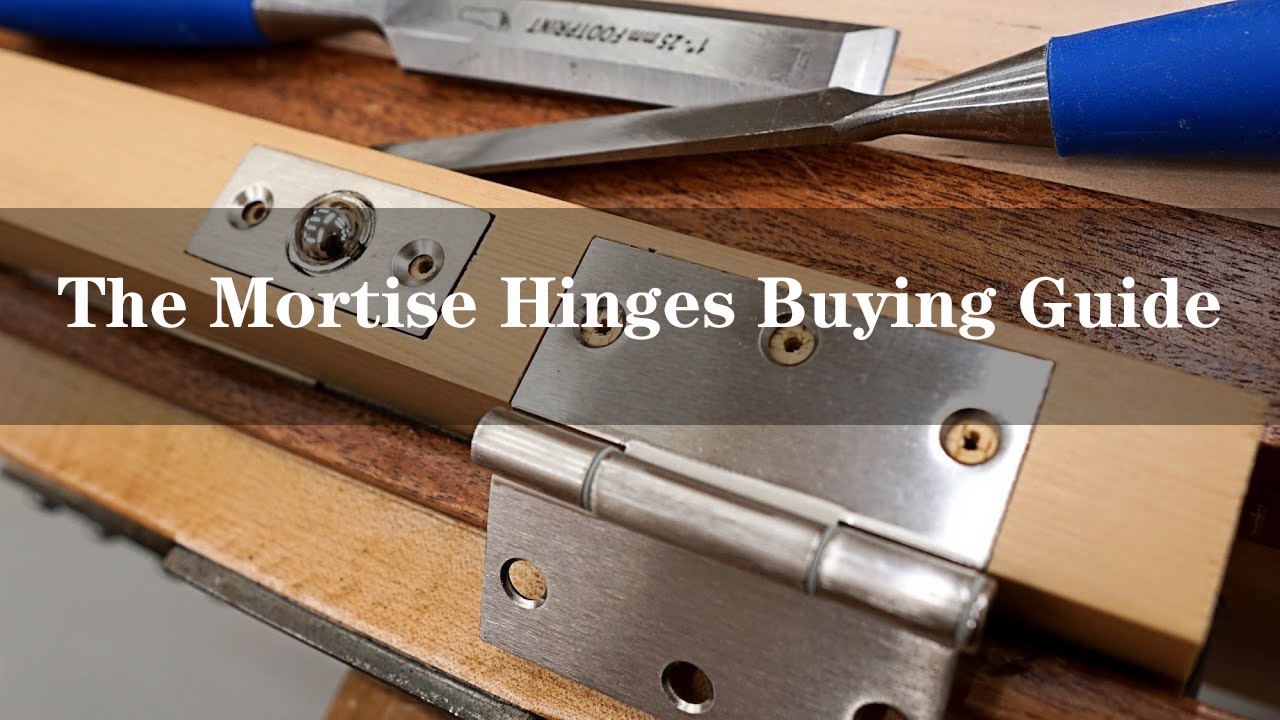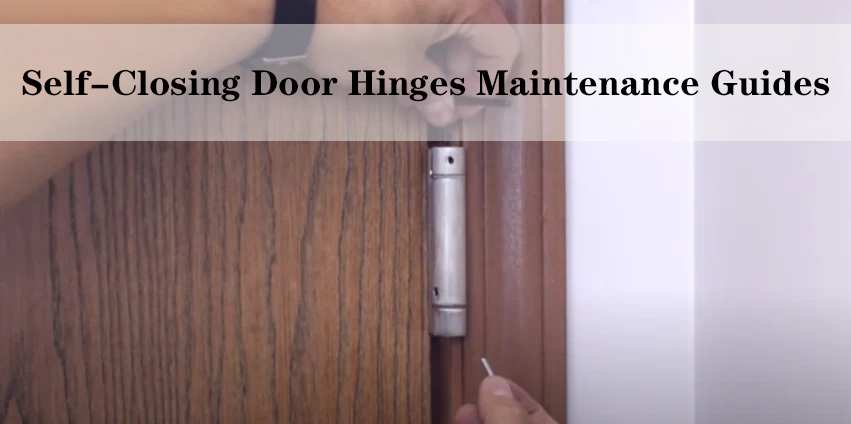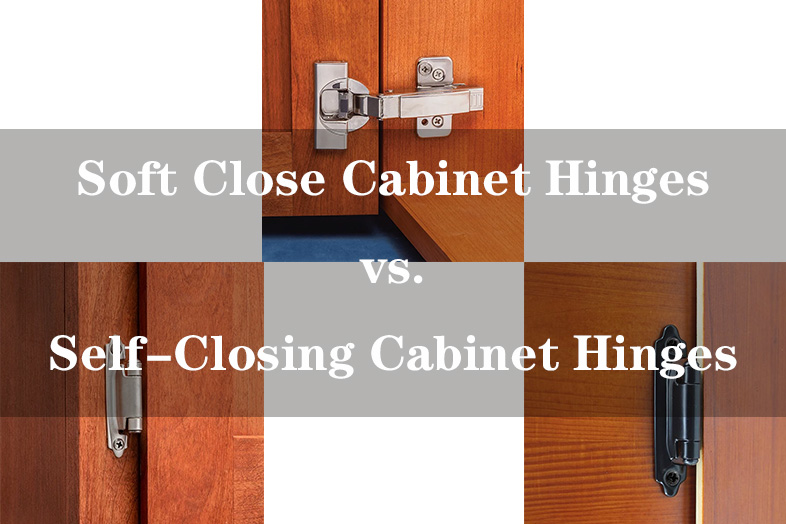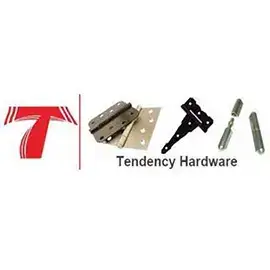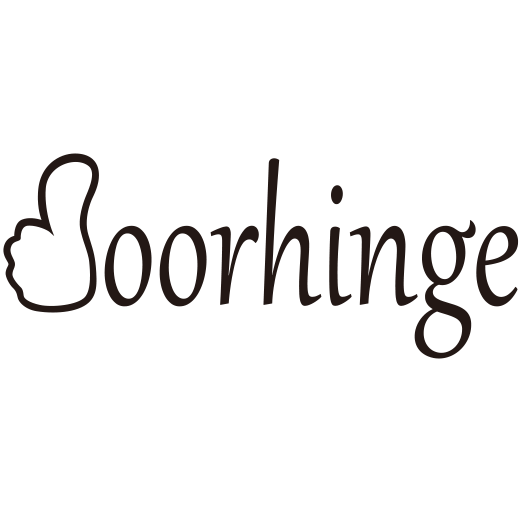In the realm of home improvement and interior design, it’s essential to remember that every little detail plays a significant role. Among these often-overlooked elements, door hardware, particularly hinges, holds a key position. While door hinges might appear small and unassuming, they wield immense influence over both the functionality and aesthetics of your living space. With a variety of door hinge options available, this article delves into the distinctions between two prominent types: door stopper hinges and common door hinges.
Understanding the differences between these hinge types is pivotal in making an educated decision when it comes to outfitting your doors. Whether you’re embarking on a full-scale home renovation or simply seeking to replace outdated hardware, having a grasp of the advantages and drawbacks of door stopper hinges versus common door hinges can significantly impact the functionality and style of your home.
Common Door Hinges: The Basics
Before delving deeper into the specifics of door stopper hinges, it’s essential to have a clear understanding of what common door hinges are and how they function. Common door hinges, also known as butt hinges or regular hinges, are the most traditional type of hinges used for doors. They consist of two plates joined together by a central pin. One plate is securely attached to the edge of the door, while the other is affixed to the door jamb or frame.

The fundamental purpose of common door hinges is to facilitate the opening and closing of doors. They achieve this by allowing the door to pivot around its central pin, enabling it to swing smoothly back and forth. One of the notable features of common door hinges is that they are typically concealed when the door is closed. This design choice provides a clean and unobtrusive appearance, which is desirable in many interior design contexts. Moreover, common door hinges are available in various sizes, finishes, and materials, making it relatively easy to find the perfect match for your doors and the overall aesthetics of your home.
The Pros of Common Door Hinges
Sleek and Classic Look: Common door hinges are celebrated for their timeless and elegant appearance. They seamlessly blend with most interior styles and do not draw attention away from the door or the surrounding decor. If you prefer a traditional or classic ambiance in your living space, these hinges are an excellent choice.
Smooth Operation: When it comes to functionality, common door hinges excel in providing a consistent and reliable swinging motion. This ensures that you can open and close doors with minimal effort, which is particularly valuable for frequently used doors.
Wide Variety: Common door hinges come in a wide range of sizes, finishes, and materials. This versatility makes it easy to find the perfect hinge that not only matches your doors but also complements the overall design and aesthetic of your home.
The Cons of Common Door Hinges
Limited Door Stop: One notable drawback of common door hinges is their lack of built-in door stoppers. This means they cannot prevent the door from swinging all the way open. In situations where you want to limit the door’s range of motion, such as preventing it from hitting a wall or adjacent furniture, this limitation can be a downside.
Potential for Damage: Without door stoppers, doors can potentially hit and damage nearby walls or furniture when opened too forcefully. This can be a concern, especially in smaller rooms or spaces with tight layouts.

Door Stopper Hinges: An Innovative Solution
Door stopper hinges represent a relatively newer addition to the world of door hardware. These hinges merge the functionality of a traditional hinge with a built-in door stop mechanism. The key distinguishing feature of door stopper hinges is a small protrusion on the hinge plate that prevents the door from swinging past a certain point. This added feature addresses some of the limitations associated with common door hinges.

The Pros of Door Stopper Hinges
Door Control: Perhaps the most significant advantage of door stopper hinges is their ability to provide precise control over the door’s range of motion. With these hinges, you can set a specific angle at which the door stops, effectively preventing it from hitting walls, furniture, or other objects. This level of control is particularly beneficial in spaces with limited clearance.
Protects Walls and Furniture: Door stopper hinges offer an effective solution to prevent doors from inadvertently causing damage to walls or furniture. By limiting the door’s swing, they reduce the risk of collisions, dings, and scratches.
Child Safety: These hinges are especially valuable in homes with young children. They reduce the risk of doors pinching fingers or accidentally slamming shut, enhancing overall safety.
The Cons of Door Stopper Hinges
Aesthetics: While highly functional, some individuals may find the protruding door stopper on these hinges less visually appealing when compared to the clean and concealed appearance of common door hinges. This is a matter of personal preference and design priorities.
Limited Variety: Door stopper hinges may have fewer options in terms of finishes and sizes compared to common door hinges. This limited variety can restrict your choices when it comes to matching your interior design preferences.
Choosing the Right Hinge for Your Needs
Now that we’ve explored the differences between door stopper hinges and common door hinges in more detail, it’s time to consider how to make the right choice for your home. The decision primarily hinges (pun intended) on your specific needs and priorities:
Functionality: If your top priority is door control and preventing damage to walls and furniture, door stopper hinges are the superior choice. They offer enhanced functionality and safety, making them particularly suitable for spaces where controlling the door’s swing is crucial.
Aesthetics: On the other hand, if you highly value a clean and classic look that seamlessly fits with various interior styles, common door hinges are a timeless choice. They maintain a minimalist appearance and blend well with most design aesthetics.
Family Considerations: In homes with young children, door stopper hinges can provide an added layer of safety by preventing doors from slamming shut or causing injuries.
Interior Design: Consider the overall design and style of your home. Choose the hinge type that best matches your decor and architectural elements. If aesthetics are a top priority, common door hinges might be more suitable.
Personal Preference: Ultimately, your personal preference and priorities should be the guiding factors in your decision-making process. Assess what matters most to you in terms of both function and aesthetics, and choose accordingly.
Installation and Maintenance: Ensuring Longevity and Smooth Operation
Regardless of whether you opt for door stopper hinges or common door hinges, the proper installation and maintenance of your door hardware are essential. These steps not only ensure the longevity of your hinges but also contribute to the smooth operation of your doors. In this section, we’ll delve deeper into these crucial aspects, providing you with comprehensive guidance.
Installation: A Solid Foundation
Follow Manufacturer’s Instructions: When installing hinges, it’s vital to adhere to the manufacturer’s instructions meticulously. These instructions are tailored to the specific hinge model and provide guidance on proper installation, including screw placement and torque specifications. Deviating from these guidelines can lead to issues down the line.
Hinge Alignment: Pay close attention to hinge alignment during installation. Ensure that the hinges are precisely level and securely fastened to both the door and the door jamb or frame. Misaligned hinges can cause doors to sag, resulting in poor closure and potential damage.
Appropriate Tools and Hardware: Using the right tools and hardware is paramount for a successful hinge installation. Investing in quality screwdrivers, drills, and screws is crucial. Using subpar tools or failing to use the correct size and type of screws can compromise the integrity of the installation.

Proper Preparations: Before you start installing the hinges, make sure the door and frame are correctly prepared. This may include chiseling recesses for the hinge plates and ensuring the door fits the frame properly. A well-prepared surface will lead to a more secure and durable hinge installation.
Maintenance: Keeping Things Running Smoothly
Regular Lubrication: To ensure that your hinges operate smoothly and quietly, it’s essential to lubricate them regularly. Use a high-quality hinge lubricant or a silicone-based spray lubricant. Apply a small amount to the hinge pins and moving parts, then open and close the door several times to distribute the lubricant evenly. Perform this maintenance task at least once a year or more frequently if needed.
Check for Loose Screws: Over time, screws can gradually loosen due to door movement and vibration. Periodically inspect the hinge screws and tighten any that have become loose. Be cautious not to overtighten, as this can strip the screw holes or damage the hinge.
Hinge Alignment: Check the alignment of your hinges and make any necessary adjustments. Misaligned hinges can lead to door misalignment, making it challenging to open or close smoothly. Use shims or adjustments to ensure that the hinges are properly aligned.
Inspect Door Stopper Mechanism (If Applicable): If your doors are equipped with door stopper hinges, it’s crucial to periodically inspect the door stopper mechanism. Ensure that it functions correctly and that there are no signs of wear or damage. Address any issues promptly to maintain the door’s stopping capabilities.
Address Rust and Corrosion: If your hinges are exposed to the elements or moisture, keep an eye out for rust or corrosion. Rust can impede the movement of hinges and weaken their structural integrity. To address this issue, remove rust using a wire brush, apply a rust converter if necessary, and then repaint or reseal the hinges to prevent further corrosion.
Preventative Maintenance: In addition to regular checks and lubrication, consider applying a preventative maintenance schedule. This may involve inspecting all door hardware, including handles and locks, to ensure they are in good condition. Addressing minor issues promptly can prevent more significant problems in the future.
In Conclusion
The choice between door stopper hinges and common door hinges is a decision that should align with your specific needs, design preferences, and family considerations. Both hinge types offer distinct advantages and potential drawbacks, so taking the time to evaluate your priorities will help you make the most informed choice for your home.
Whichever hinge type you ultimately select, proper installation and maintenance are key to ensuring that your doors operate smoothly and add to the overall beauty and functionality of your living space. So, carefully consider your options, and you’ll be well on your way to enhancing your doors and improving your home’s overall experience.








